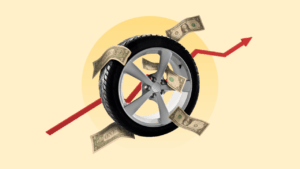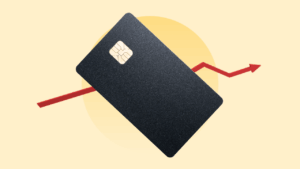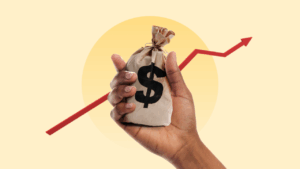CD rates forecast for 2026: APYs will trend lower but still beat inflation

Returns on certificates of deposit (CDs) saw gradual declines in 2025, before and after three Federal Reserve rate cuts in the second half of the year. Yields are likely to keep falling in 2026 — although the good news for CD savers is you can still lock in rates that are outpacing inflation.
For nationally available CDs in 2026, Bankrate senior industry analyst Ted Rossman predicts the highest rate for one-year CDs will be 3.5% annual percentage yield (APY) — a figure that’s down around one percentage point from the top one-year CD APY in 2025. Among five-year CDs, Rossman expects the highest rate to be 3.8% APY, which reflects a half-percentage point drop from 2025’s highest five-year CD rate.
Even though CD rates peaked about a year-and-a-half ago, there are still benefits to seeking the top yields today. There is a huge gap between the best rates and the national averages, and the best rates are still beating inflation.— Ted Rossman, Bankrate senior industry analyst
Bankrate’s 2026 CD forecast and industry insights
- 2026 overall national average: 1.8% APY | Roughly a tenth of a percentage point decrease from the average at the end of 2025.
- 2026 national average low: 1.7% APY | Lowest level for one-year CD averages since May 2023.
- 2026 national average high: 1.9% APY | About the same as 2025 end-of-year average.
- 2026 overall national average: 1.55% APY | Roughly a tenth of a percentage point decrease from the average at the end of 2025.
- 2026 national average low: 1.4% APY | Lowest level for five-year CD averages since November 2024.
- 2026 national average high: 1.7% APY | About the same as 2025 end-of-year average.
If you opened a high-yield CD in 2025, you can pat yourself on the back knowing you likely locked in an attractive rate that’s no longer available. Competitive CD rates have been decreasing in recent years, and Bankrate’s Rossman predicts they’ll continue to slide in 2026.
One reason for declining CD rates is that the Federal Reserve cut the federal funds rate six times over the course of 2024 and 2025. This benchmark rate moves in reaction to macroeconomic conditions, such as inflation, the unemployment rate and the state of the economy. And when the federal funds rate changes, many banks often follow suit by moving their deposit account APYs in the same direction.
So while competitive CD APYs were commonly above 5% in recent years — thanks to Fed rate increases to help tame inflation — they’ve decreased to around 4% in late 2025.
Rossman predicts three quarter-point Fed rate cuts to come in 2026, citing recent data on lower inflation, a weakening job market and the upcoming nomination of a new Fed Chair by President Donald Trump, who favors steep rate cuts. As such, savers will likely see further drops in CD APYs and other savings accounts in 2026. But you still have a chance to lock in CD rates that are outpacing inflation, which in November 2025 was 2.7%, year-over-year (according to the Consumer Price Index).
But the twists and turns of national macroeconomic conditions these days can make it especially challenging to forecast rates. As a result, our forecast, which Bankrate has been making for well over a decade, naturally entails a margin of error. Ultimately, we make these forecasts based on the best data we have to help readers make sound financial decisions.
What happened to CD interest rates in 2025
Heading into 2025, Bankrate correctly predicted that competitive CD rates would continue to drop and that the Fed would make three rate cuts.
And in 2025, competitive CD rates did indeed have a downward trend both before and in response to the Fed cutting rates in September, October and December. The top one-year CD rate at the end of December 2025 was 40 basis points lower than it was in January 2025, and the top five-year CD rate was 5 basis points lower.
As for average rates, the one-year average didn’t budge much from the start of 2025 to the end, and the five-year average actually increased around a quarter percentage point.
What consumers need to know about CD interest rates in 2026
Fed rate cuts in 2026 will likely bring down deposit account APYs even more. However, a CD can be a bright spot in a falling-rate environment because it locks in the same APY until its term ends, even if the bank lowers the going rates on new CDs in the meantime.
“Even in a falling rate environment, don’t settle for average or low rates from your bank,” Rossman says. “It’s actually better for your purchasing power if you get a 4% rate when inflation is 2.5% than if you got a 5% rate when inflation was 9%.”
How to find the best CD rates
To find a CD with a highly competitive rate, look at online-only banks and credit unions. Online banks can often afford to pay better APYs because they don’t have the costs of running branches, and not-for-profit credit unions often share profits with their members in the form of higher rates. Large brick-and-mortar banks, on the other hand, are well known for offering rock-bottom rates.
Bankrate’s list of best CD rates can be a helpful resource for finding the highest rates, and many of the banks and credit unions on the list don’t require any set minimum deposit.
- Only deposit money you won’t need before the CD’s term is up. Instead, keep your emergency fund in a liquid account, such as a high-yield savings account, where you can withdraw the money anytime without penalty.
- Put your money into a bank insured by the Federal Deposit Insurance Corp. (FDIC) or a credit union insured by the National Credit Union Administration (NCUA). The safety of your money is as important as the rate it’s earning — if not even more important.
What you can earn with a top one-year CD
No matter the rate environment, it’s important to find a competitive APY on a CD so that you’re not leaving interest earnings on the table. Some banks are paying as high as 4% APY these days for CDs, whereas others are paying as little as 0.01%.
Here’s how much you could earn in various types of one-year CDs on a $5,000 deposit:
| Type of 1-year CD | Typical APY | Interest on $5,000 after 1 year | Total value of CD with $5,000 opening deposit after 1 year |
| CDs that pay competitive rates | 4.00% | $200 | $5,200 |
| CDs that pay the national average | 1.93% | $96.50 | $5,096.50 |
| CDs from big brick-and-mortar banks | 0.01% | $0.50 | $5,000.50 |
The example above shows a deposit of $5,000 — but if this seems out of reach, you have options. Plenty of banks that pay top rates require a smaller minimum deposit, if any at all. No matter how much you can commit to a CD, you’ll benefit from a high guaranteed rate.
For instance, if you could put $500 in a one-year CD that earns a 4% APY, you can earn around $20 in total interest. And in a five-year CD, you’ll end up with over $108 in interest over the length of the term. This might not seem like much, but that money would earn less in a variable-rate savings account that lowers its rate over time. You can use Bankrate’s CD calculator to see how much you can earn in a CD with what you can afford to deposit.
If you’re interested in opening a CD but don’t have a large amount, consider an add-on CD, which allows you to deposit additional money over time. Just make sure you’re not giving up a competitive rate in exchange for this flexibility.
In short, right now can be a good time to lock in a CD rate, as high APYs are still outpacing inflation and are likely to drop in 2026.
Why we ask for feedback Your feedback helps us improve our content and services. It takes less than a minute to complete.
Your responses are anonymous and will only be used for improving our website.





